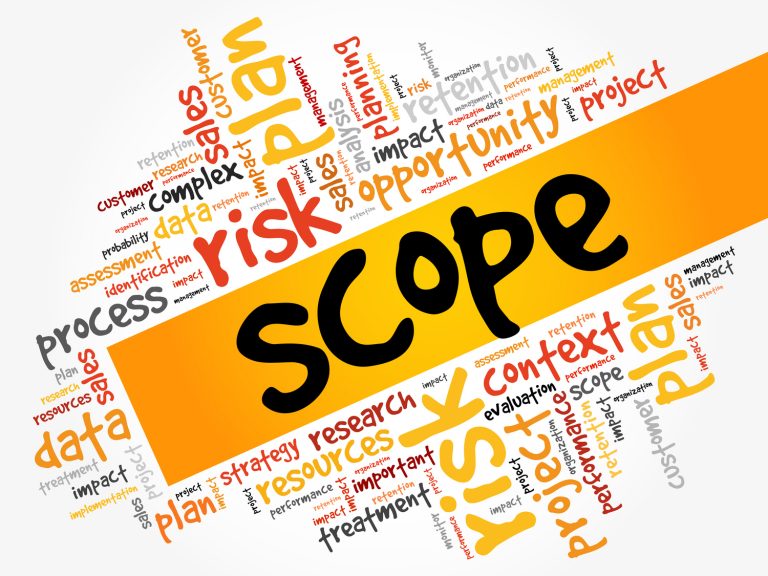Here is an outline of the major components of a comprehensive scope of work document

In our recent blog post, Make Your Scope of Work Statements Stand Out, we talk about how good scope of work statements help establish boundaries and responsibilities. Today, Brad Malone, of Navigate Management Consulting, continues this discussion, describing what your scope of work documents should look like.
I have heard many terms used to describe the contractual aspects of an audiovisual integration project: bill of materials (BOM), scope of work or statement of work (SOW), work order, proposal, and contract, to name a few. But often, when I ask key project stakeholders (sales, clients, project managers, technicians, procurement, warehousing, service, etc.) where these documents are and whether I can look at them, I often get blank stares or embarrassed smiles.
“Oh, you want to read the SOW? I don’t know where it is,” one person might say. Or they’ll say, “I didn’t get a copy,” or “We don’t have time to read them,” or (worse yet), “Management doesn’t let me read them.”
When I can get my hands on a scope of work, I find that the document being circulated is usually one or two pages long, with a list of equipment and pricing (maybe) — no assumptions, no client responsibilities, no change-order procedures and often no sign-off or escalation procedures. It is as if AV integration companies don’t want to hold clients responsible for anything, including payment for the completed work.
If integration companies want to be more respected by clients in the marketplace, their contracts should be the starting point for creating credibility and professionalism.
The salespeople must create an expectation that a comprehensive scope of work will be adhered to. They should spend time with the client, covering change-control procedures, client responsibilities, escalation processes and sign-off and payment procedures.
The project manager should further ensure their counterpart has read and understands the pertinent parts of the contract. Personally, I always keep a copy of the contract or statement of work in my project notebook so I can refer to it, if necessary, during discussions with the client, general contractor, or other interested party.
Some of the best AV integration companies I have worked with train everyone in their organization on the purpose and details of each section of the contract. This kind of education provides a holistic knowledge of how the company sustains itself and generates its revenues and profits. It also gives individuals a context for supporting one another during the project, from design to purchasing, shipment to staging, installation to programming, and change orders to commissioning.
Here is an outline of the major components of a comprehensive scope of work. All the sections below should be used for the three major types of AV integration jobs (hang and bang, design/build, and bid), employing varying degrees of complexity. At the end of the day, it is better to have documentation and not use it than not have it and need it.
Each of these sections serves a purpose and reflects on the AV integration company’s professionalism in fulfilling its obligations. Taken as a whole, the scope of work will hold other parties (client, GC, other subcontractors) responsible for their actions in complying with the contract. The scope of work does not have to be filled with onerous legal-sounding jargon; in fact, straight-forward language is better.
Comprehensive Scope of Work Document
-
Executive Summary (0ne page that includes purpose, high-level functionality and deliverables)
-
General Information
- Integration company statistics
- References
- Company biography (vision, mission, values and ethics)
- Company history
- Key personnel
- Key subcontractors (if applicable)
-
Proposed Solution
- Description of functionality
- Product listing
- Drawings (if applicable)
-
Assumptions
- State any conditions that are being relied on (owner-furnished equipment, facility readiness, electrical, etc.)
- State the assumptions that pricing is based on (results of site survey, etc.)
- Field verification audit and disclaimer (see “Terms and Conditions”)
-
Pricing Information (either fixed price or time and materials)
- Product listing (bill of materials, etc.)
- Labor (proposed hours, if required)
- Service and warranty (if applicable)
-
Milestones (with an attached schedule, if applicable)
- Purchase order receipt
- Material shipment
- Logistics
- Drop Ship
- Implementation activities (summary, by type and complexity of project)
- Rough-in
- Programming
- Acceptance test
- Client training
- Logistics
- Client final acceptance
- Payment structure (initial, progress, and final)
-
Responsibilities (client, integrator, GC, etc.)
- Client
- Facilities
- Digital Signage (content)
- Owner-furnished equipment
- Security, storage and site access
- Training and testing
- Integration Company
- Progress meetings
- Subcontractors (not affiliated with the integrator)
- Escalation and governance structure (i.e. who decides what)
- Structure for client (by role or name)
- Structure for integrator (by role or name)
- Structure for key subcontractors (by role or name)
- Client
-
Project Management Procedures
- Kick-off meeting and field verification audit
- Status reviews (progress tracking)
- Change orders (field and contract)
- Interim approvals
-
Warranty Agreement
- Service Levels
-
Maintenance Agreement
- Could be a separate document from the Warranty Agreement
-
Terms and Conditions
- Standard hours / travel
- Performance bonds / payment bonds
- Field verification disclaimer: In developing a comprehensive proposal for equipment and installation services, ABC integration company’s AV and engineering teams must make some assumptions regarding the physical construction of your facility, the availability of technical infrastructure and site conditions for installation. If any of the assumptions we have indicated in the site survey form are incorrect for your particular project or project site, please let your sales representative know as soon as possible. Changes to the proposal may have an effect on the price of equipment or services. To ensure that you have an accurate proposal based on your facility and specific to the conditions of your project, please review these assumptions carefully.
- Insurance
- Taxes
- Permits, fees and licenses
- Security clearances (if required)
- Safety or OSHA requirement
- Payment structure (this could be move to section 6)
- Rules and timeframe for payments
- Financing options
- Arbitration
- Confidentiality agreement
- Warranty statement
-
Definition of Terms
This article comes from our partners at Navigate Management Consulting, and has been published with their express permission.
Click here for a downloadable version of the Scope of Work Document, which is available in the Resource Library on the Navigate website.
Handpicked Related Content
-
Good Scope of Work Statements Establish Boundaries and Responsibilities A well-defined and communicated scope statement is one of the primary methods of managing a client’s often-changing expectations of what they will ultimately receive from a project. This is developed during…


